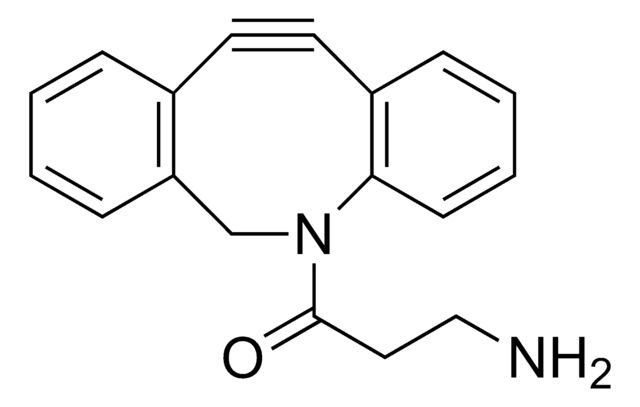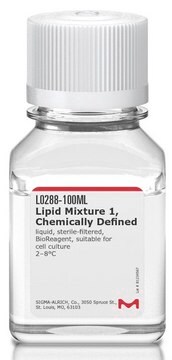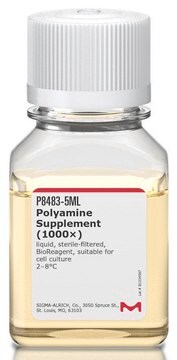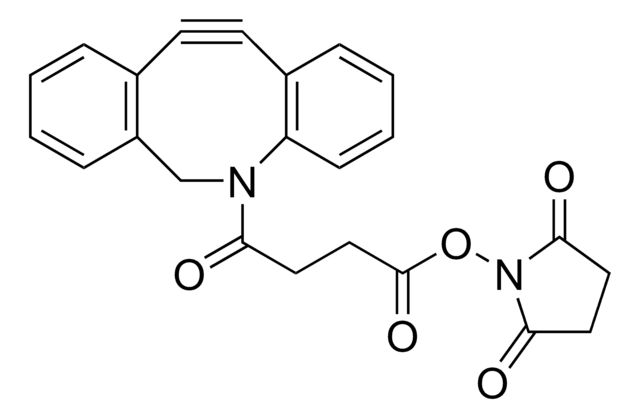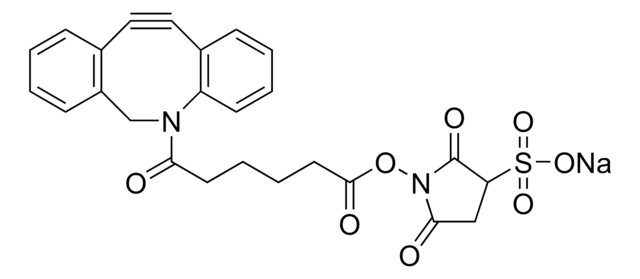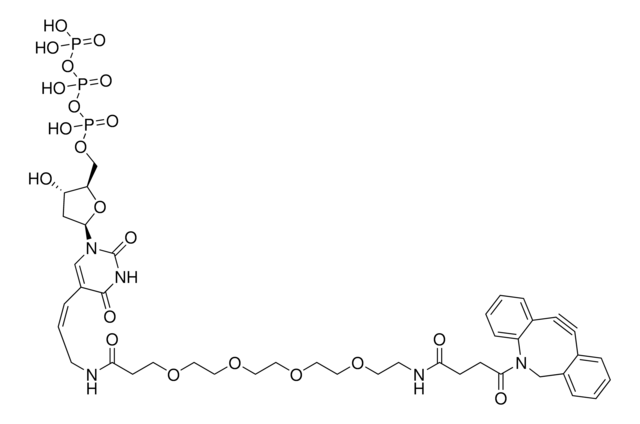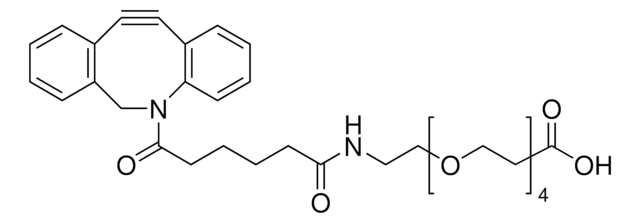760749
Dibenzocyclooctyne-PEG4-biotin conjugate
for Copper-free Click Chemistry
Synonyme(s) :
Polyethylene glycol, DBCO-PEG4-biotin
About This Item
Produits recommandés
Niveau de qualité
Forme
solid
Capacité de réaction
reaction type: click chemistry
Température de stockage
−20°C
Chaîne SMILES
O=C(CCCC[C@@H]1SC[C@@H]2NC(=O)N[C@H]12)NCCOCCOCCOCCOCCC(=O)NCCC(=O)N3Cc4ccccc4C#Cc5ccccc35
InChI
1S/C39H51N5O8S/c45-35(12-6-5-11-34-38-32(28-53-34)42-39(48)43-38)41-18-20-50-22-24-52-26-25-51-23-21-49-19-16-36(46)40-17-15-37(47)44-27-31-9-2-1-7-29(31)13-14-30-8-3-4-10-33(30)44/h1-4,7-10,32,34,38H,5-6,11-12,15-28H2,(H,40,46)(H,41,45)(H2,42,43,48)/t32-,34-,38-/m0/s1
Clé InChI
LNHSQAOQVNHUGL-QRBHCBQLSA-N
Description générale
Application
Caractéristiques et avantages
Code de la classe de stockage
11 - Combustible Solids
Classe de danger pour l'eau (WGK)
WGK 3
Point d'éclair (°F)
Not applicable
Point d'éclair (°C)
Not applicable
Faites votre choix parmi les versions les plus récentes :
Déjà en possession de ce produit ?
Retrouvez la documentation relative aux produits que vous avez récemment achetés dans la Bibliothèque de documents.
Les clients ont également consulté
Articles
Copper-free click chemistry is an alternative approach to click chemistry that proceeds at a lower activation barrier and is free of cytotoxic transition metal catalysts.
Notre équipe de scientifiques dispose d'une expérience dans tous les secteurs de la recherche, notamment en sciences de la vie, science des matériaux, synthèse chimique, chromatographie, analyse et dans de nombreux autres domaines..
Contacter notre Service technique
